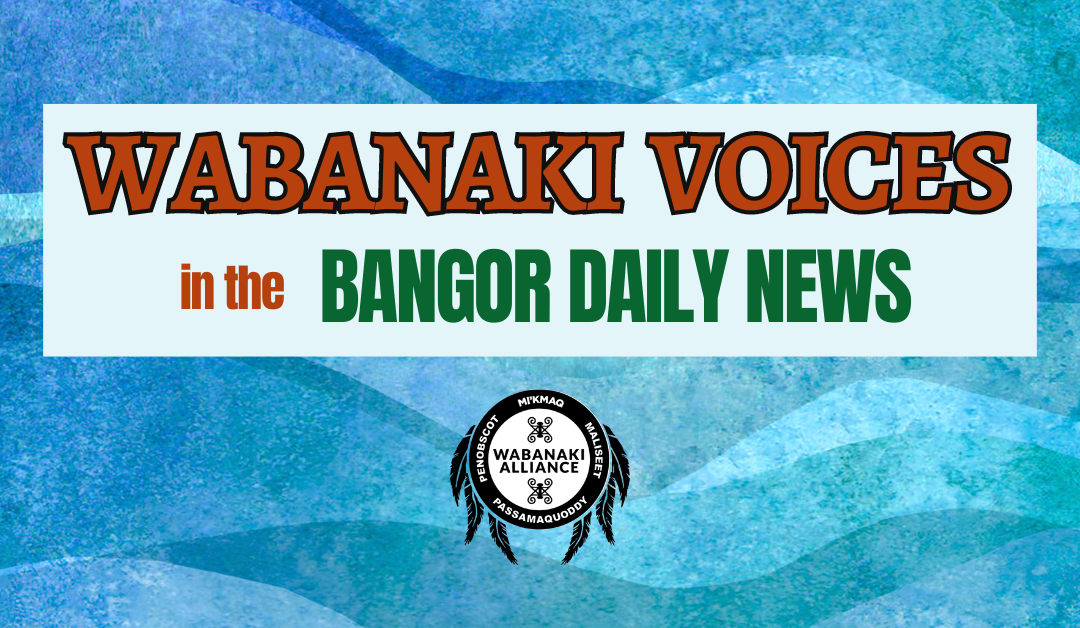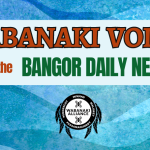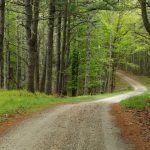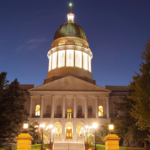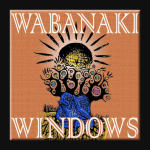The April Wabanaki Voices column was written by Dr. Darren Ranco, a citizen of the Penobscot Nation, chair of Native American Programs and coordinator of Native American Research at the University of Maine, and a member of the Planning Team for the Wabanaki Commission on Land and Stewardship. Wabanaki voices is a monthly column in the Bangor Daily News opinion section that shares tribal perspectives. Read all Wabanaki Voices columns here.
The recent observance of Earth Day allows us the opportunity to recognize that 2023 was a record-setting 2.12 degrees Fahrenheit above the 20th century average temperature, as well as reflect on emerging hopeful trends that support the health of our planet. One of these hopeful trends is the recent collaborations between conservation groups and Indigenous peoples across the world, including here in the place we now call Maine.
Land return, rematriation (rebuilding traditional Indigenous stewardship and caretaking practices to ancestral places) and conservation work led by Indigenous peoples intersects with several of the key issues impacting the well-being and cultures of our Indigenous nations. This includes, but is not limited to, issues of environmental and climate justice, food sovereignty, health and economic justice. Indigenous leadership, knowledge and decision-making in conservation work also represent conservation best practice — resulting in the most effective ways to productively conserve lands for climate resilience and biodiversity.
I am one of the conveners and organizers of the Wabanaki Commission on Land and Stewardship/Psiw ut skitkamiq kignumin (“the whole earth is our home” in Passamaquoddy), which is a tribally appointed entity representing all federally recognized Wabanaki Tribal Nations in what is now Maine — the Penobscot, Passamaquoddy, Maliseet and Mi’kmaq. I am also an educational adviser to the First Light Learning Journey, a land trust group led by Maine Coast Heritage Trust, The Nature Conservancy-Maine and a host of others organizing and educating other land trusts on Indigenous people and issues in Maine.
In these roles, I have witnessed the return of thousands of acres to tribal control and even more acres opened up to Wabanaki cultural practices and harvesting of critical cultural resources. One completed land return project of note is the return of Pine Island/ Kuwesuwi Monihq to the Passamaquoddy Tribe in 2021, a ceremonial place taken from the Passamaquoddy Tribe in the 1820s. One current project, led by the Penobscot Nation and the Trust for Public Land, looks to return about 30,000 acres to the Penobscot Nation along the east branch of the Penobscot River/Wáhsehtəkʷ in the Penobscot language, in the heart of my tribe’s ancestral hunting and fishing territories.
Since the 2008 publication of Claudia Sobrevila’s World Bank report, “The Role of Indigenous Peoples in Biodiversity Conservation,” conservation scholars and practitioners, both Indigenous and non-Indigenous, have been exploring, and comparing, Indigenous stewardship with “conventional” non-Indigenous land trust and conservation practices. The Sobrevila report identifies the fact that Indigenous people, worldwide, account for just 4 percent of worldwide population, and control, in some way, 17 percent of the world’s land, upon which exists 80 percent of the world’s terrestrial biodiversity.
The Sobrevila report does not actually look at causation — it merely identifies a correlation — but research since its publication has made great strides in connecting Indigenous stewardship, biodiversity and effective conservation.
Recent scholarship ( Ellis et al 2021, Dawson et al 2022, Artelle 2019, Schuster et al 2019 and forthcoming publication from Dr. Suzanne Greenlaw and Dr. Michelle Baumflek) has explored how Indigenous stewardship has supported biodiversity for at least 12,000 years; positively compared Indigenous conservation to non-Indigenous conservation; shown the importance of Indigenous governance in effective conservation; demonstrated the important role of Indigenous people’s land management in supporting nation states to achieve their climate change mitigation goals; and proven that Wabanaki gathering practices benefit marshland ecology by enhancing the growth of culturally important grasses. The impact of these studies has created a new set of best practices and opened possibilities for land trusts and conservation groups, to support Indigenous land return and conservation efforts.
Changing practices in support of the earth is not without difficulty — even for conservation organizations. The First Light educational cohorts, representing 65 organizations across the state, have begun to address some difficult histories of their organizations — and how they, along with state and national parks, have prevented Indigenous people from practicing their land-based cultures and caring for lands and waters, resulting in less effective conservation outcomes, given the current best practices.
As guides in this work, Wabanaki people also have refined and recommitted to traditional caretaking roles and practices, creating, through partnership and education, a stronger conservation movement that includes and reflects Wabanaki expertise and perspective. Beyond the obvious win-win-win (for Wabanaki, conservation groups and the earth) approach in this work, the partnerships and collaborations have taught another lesson: What is best for the earth is that we — Wabanaki and non-Wabanaki — need to work together to take care of our home for future generations.

